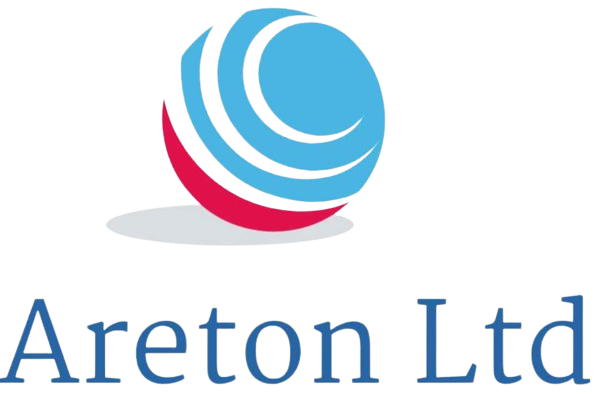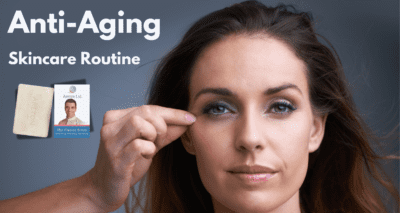What is Salicylic Acid?
Salicylic acid is a beta hydroxy acid (BHA) that occurs naturally in plants like willow bark and sweet birch. Its chemical structure consists of a salicyl group attached to a carboxyl group, giving it the molecular formula C7H6O3. Salicylic acid is a colorless crystalline solid with a distinctive odor.
As a BHA, salicylic acid is lipophilic, meaning it can penetrate through the skin’s lipid layers more easily than other acids like alpha hydroxy acids (AHAs). This allows salicylic acid to effectively break down and dissolve sebum (skin oil), dead skin cells, and other debris that can clog pores and lead to acne. Its keratolytic properties also help promote exfoliation of the skin’s outer layer.
Due to its potent exfoliating and anti-inflammatory properties, salicylic acid is widely used in skincare products targeting acne, blackheads, whiteheads, and enlarged pores. It’s also found in some dandruff shampoos and wart removers. When used topically, salicylic acid is generally safe and well-tolerated, although it can cause dryness, irritation, or sun sensitivity in some individuals.
Benefits of Salicylic Acid for Skin
Salicylic acid offers several key benefits that make it an effective ingredient for minimizing pores and treating acne-prone skin. Firstly, it has potent anti-inflammatory properties that can help reduce redness, swelling, and irritation associated with acne breakouts. Secondly, salicylic acid is a beta-hydroxy acid (BHA) that acts as an exfoliant, helping to slough off dead skin cells and unclog pores. This prevents pores from becoming clogged with excess oil, dirt, and bacteria, which can lead to blackheads, whiteheads, and pimples.
Moreover, salicylic acid has keratolytic properties, meaning it can penetrate deep into pores and break down the bonds between skin cells, allowing for better exfoliation and preventing pore blockages. By keeping pores clear and preventing buildup, salicylic acid can effectively minimize the appearance of enlarged pores over time.
Additionally, salicylic acid has antimicrobial properties, which can help combat the bacteria that contribute to acne formation. It can reduce the growth of Propionibacterium acnes, a type of bacteria that plays a significant role in the development of acne lesions.
How Salicylic Acid Minimizes Pores
Salicylic acid is a beta hydroxy acid that is oil-soluble, allowing it to penetrate deep into pores where it can break down oil, dead skin cells, and other debris that can clog pores and cause them to appear larger. By clearing out this buildup, salicylic acid helps pores look smaller and less noticeable.
The exfoliating properties of salicylic acid also help slough off dead skin cells on the surface of the skin. This smooths out the skin’s texture, reducing the appearance of enlarged pores. The gentle peeling action encourages cell turnover, revealing fresher, smoother skin.
Additionally, salicylic acid has anti-inflammatory effects that can help calm redness and irritation associated with clogged pores and acne. This reduces the swollen, inflamed appearance around pores that can make them look bigger. The acid’s antibacterial properties also help keep pores clear of acne-causing bacteria.
Using a Salicylic Acid Soap
Salicylic acid soaps are easy to incorporate into your daily skincare routine. For best results, use the soap once or twice daily. In the morning, lather the soap with warm water and gently massage it onto your damp face using circular motions. Avoid getting the soap in your eyes. Rinse thoroughly and pat your skin dry. At night, repeat the process after removing makeup and cleansing your face of impurities from the day.
When applying salicylic acid soap, focus on areas prone to clogged pores, blackheads, and breakouts, such as the forehead, nose, chin, and jawline. The soap can also be used on the back and chest if you experience body acne. Leave the lather on for 30-60 seconds to allow the salicylic acid to penetrate the pores before rinsing.
Look for soaps with a concentration of 0.5-2% salicylic acid, as higher percentages can be drying and irritating. Some top salicylic acid soap recommendations include:
- CeraVe Renewing SA Cleanser
- Neutrogena Oil-Free Acne Wash Pink Grapefruit
- La Roche-Posay Effaclar Medicated Gel Cleanser
- The INKEY List Salicylic Acid Cleanser
Be patient and consistent with your routine, as it can take 4-8 weeks to see visible improvements in minimizing pores and controlling acne. Pair the salicylic acid soap with other acne-fighting products like retinoids or benzoyl peroxide for enhanced results.
Salicylic Acid Concentration in Soaps
Salicylic acid soaps typically contain between 0.5% and 2% salicylic acid. The concentration can play a role in how effective the soap is at minimizing pores and treating acne.
For most people with normal to oily skin, a concentration of 0.5% to 1% salicylic acid is generally recommended. This level can help unclog pores and prevent new pimples from forming without being too drying or irritating.
Those with oily, acne-prone skin may benefit from a soap with 1% to 2% salicylic acid. The higher concentration can provide a deeper pore-clearing effect, but it also increases the risk of dryness, peeling, and irritation.
Individuals with dry or sensitive skin should opt for a lower concentration, around 0.5% salicylic acid, or consider using the soap less frequently to avoid excessive dryness and irritation.
It’s essential to start with the lowest effective concentration and gradually increase if needed, as everyone’s skin can react differently to salicylic acid. Monitoring your skin’s response and adjusting the concentration accordingly is crucial for achieving the desired results without causing unnecessary irritation.
Combining with Other Acne Treatments
Salicylic acid can be combined with other acne treatments for enhanced results. One popular combination is with benzoyl peroxide, which helps kill acne-causing bacteria. Using a salicylic acid soap in the morning and a benzoyl peroxide cream at night can be an effective regimen for managing acne breakouts.
Retinoids, such as adapalene or tretinoin, are another common pairing with salicylic acid. Retinoids help unclog pores and promote cell turnover, while salicylic acid exfoliates and removes excess oil and dead skin cells. This combination can be particularly beneficial for those with stubborn acne or clogged pores.
Alpha hydroxy acids (AHAs), like glycolic acid or lactic acid, can also be used alongside salicylic acid. AHAs help to exfoliate the skin’s surface, while salicylic acid penetrates deeper into the pores. This dual-action approach can help to prevent future breakouts and improve overall skin texture and radiance.
It’s important to introduce new products slowly and monitor for any irritation or dryness when combining acne treatments. Start with lower concentrations or alternate the use of different products to allow your skin to adjust gradually. Additionally, always use a broad-spectrum sunscreen when using exfoliating or drying products, as they can increase sun sensitivity.

Precautions for Using Salicylic Acid
While salicylic acid is generally safe for most people when used as directed, there are some important precautions to keep in mind:
Dryness and Irritation: Salicylic acid can cause excessive dryness, peeling, and irritation, especially when first starting to use it. Start with a lower concentration and gradually increase it as your skin builds tolerance. Use a moisturizer to counteract dryness.
Sun Sensitivity: Salicylic acid can increase your skin’s sensitivity to the sun, making you more prone to sunburns and sun damage. Always use sunscreen with an SPF of 30 or higher when using salicylic acid products.
Not for Certain Conditions: Salicylic acid should be avoided if you have certain skin conditions like rosacea, eczema, or severely dry skin, as it can further irritate and worsen these conditions. Consult a dermatologist before using it if you have any pre-existing skin issues.
Avoid Certain Areas: Do not use salicylic acid products on broken, sunburned, or overly irritated skin. Avoid getting it in your eyes, mouth, or on mucous membranes, as it can cause stinging and irritation.
Best Salicylic Acid Soaps for Minimizing Pores
Neutrogena Oil-Free Acne Wash – This affordable drugstore find contains 2% salicylic acid to help unclog pores and treat acne. It’s a gel formula that creates a gentle lather to deep clean without over-drying.
CeraVe Renewing SA Cleanser – With a lower 0.5% salicylic acid concentration, this fragrance-free face wash is ideal for those with sensitive skin. It uses ceramides to support the skin’s barrier and niacinamide to calm redness.
Paula’s Choice CLEAR Pore Normalizing Cleanser – This 0.5% salicylic acid face wash earns raves for its ability to decongest clogged pores and control oil production. It has a creamy gel texture that rinses clean.
Aveeno Clear Complexion Foaming Cleanser – In addition to 0.5% salicylic acid, this daily face wash contains soy to help even out skin tone. The gentle, fragrance-free formula won’t strip the skin’s moisture barrier.
Murad Clarifying Cleanser – With a potent 1.5% salicylic acid concentration, this gel cleanser dives deep into pores to eliminate impurities. Green tea extract provides antioxidant benefits.
Natural Alternatives to Salicylic Acid
For those looking for natural alternatives to synthetic salicylic acid, several botanical sources offer similar pore-minimizing and exfoliating benefits. Willow bark extract, derived from the same source as aspirin, contains naturally-occurring salicylic acid compounds. Fruit enzymes like papaya and pineapple contain alpha-hydroxy acids that gently dissolve dead skin cells and unclog pores. Sugar scrubs provide gentle physical exfoliation to slough off dulling surface cells and reveal smoother, more radiant skin.
While natural alternatives may be gentler, they often require more frequent application or higher concentrations to achieve the same results as synthetic salicylic acid. However, for those with sensitive skin or preferences for natural products, botanical sources can be an effective option for minimizing pores and achieving a clearer complexion.
When to See a Dermatologist
While salicylic acid soaps can be effective for minimizing pores and treating mild acne, there are certain situations where it’s best to consult a dermatologist:
Signs of Irritation: If you experience excessive dryness, redness, peeling, or irritation after using a salicylic acid soap, it’s a good idea to stop using it and see a dermatologist. These could be signs of an allergic reaction or that the product is too strong for your skin.
Lack of Improvement: If you’ve been using a salicylic acid soap consistently for several weeks or months and haven’t noticed any improvement in the appearance of your pores or acne, it may be time to seek professional help. A dermatologist can evaluate your skin and recommend more effective treatments.
Severe Acne: Salicylic acid soaps are generally best for mild to moderate acne and enlarged pores. If you have severe, cystic acne, or acne that is leaving scars, it’s important to see a dermatologist. They can prescribe stronger medications or recommend other treatments to get your acne under control and prevent further scarring.
Remember, while over-the-counter products like salicylic acid soaps can be helpful for some people, they may not be enough for everyone. A dermatologist can provide personalized advice and treatment options based on your specific skin concerns and needs.
-
 Rated 0 out of 5¡A la Venta!Add to basket
Rated 0 out of 5¡A la Venta!Add to basket$10.00Original price was: $10.00.$5.99Current price is: $5.99.
Effective Anti-Aging Skincare Routine | Step-by-Step
Introduction Aging is a natural process that everyone goes through....
Read MoreAcne Unmasked: Understanding & Solutions
What is Acne? Acne manifests as spots and pimples, primarily...
Read MorePimples: Why do they happen?
The Saga of the Spot: A Comprehensive Exploration of Pimples...
Read MoreAchieve Radiant Skin care with Softening Treatments
Introduction Skin Softening, Soft, smooth skin is universally desired for...
Read More





